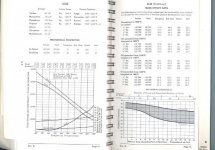SShep71
Hot Rolled
- Joined
- Sep 17, 2014
- Location
- San Diego, Ca
I had a lot of metal samples scanned a while back with an XRF gun. I am going though the results and while most have compositions that match, several have "ODD" compositions. One I am looking at right now.
98.515 Fe
0.737 Mn
0.32 Cu
0.161 Ni
0.12 Ti
0.096 Cr
0.031 Mo
This is a solid 8" diameter piece that is over 72", I need to make some gauges out of it but I want to make sure this stuff isn't just going to walk all over the place after final machining.
Does this data make any sense, I cannot seem to find a comparable material with similar chemistry ?
98.515 Fe
0.737 Mn
0.32 Cu
0.161 Ni
0.12 Ti
0.096 Cr
0.031 Mo
This is a solid 8" diameter piece that is over 72", I need to make some gauges out of it but I want to make sure this stuff isn't just going to walk all over the place after final machining.
Does this data make any sense, I cannot seem to find a comparable material with similar chemistry ?


